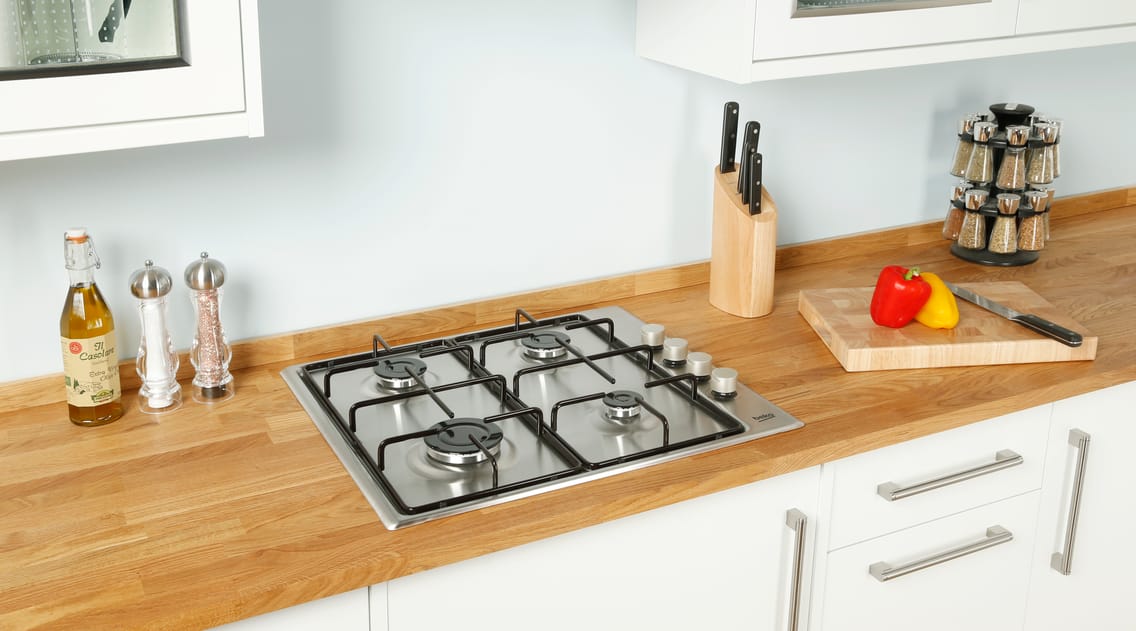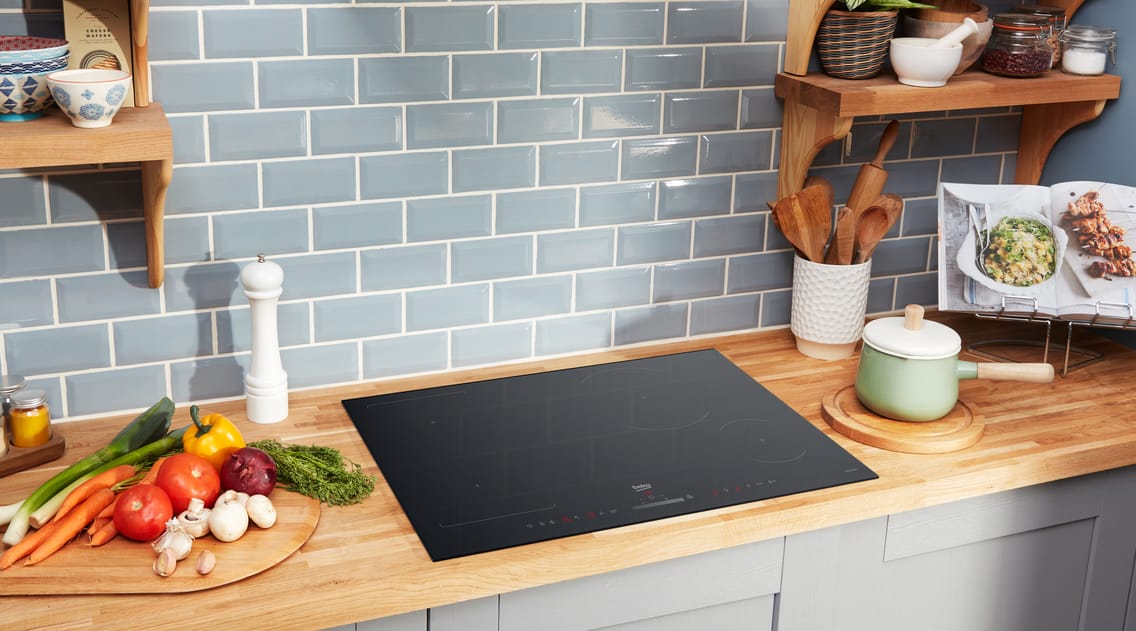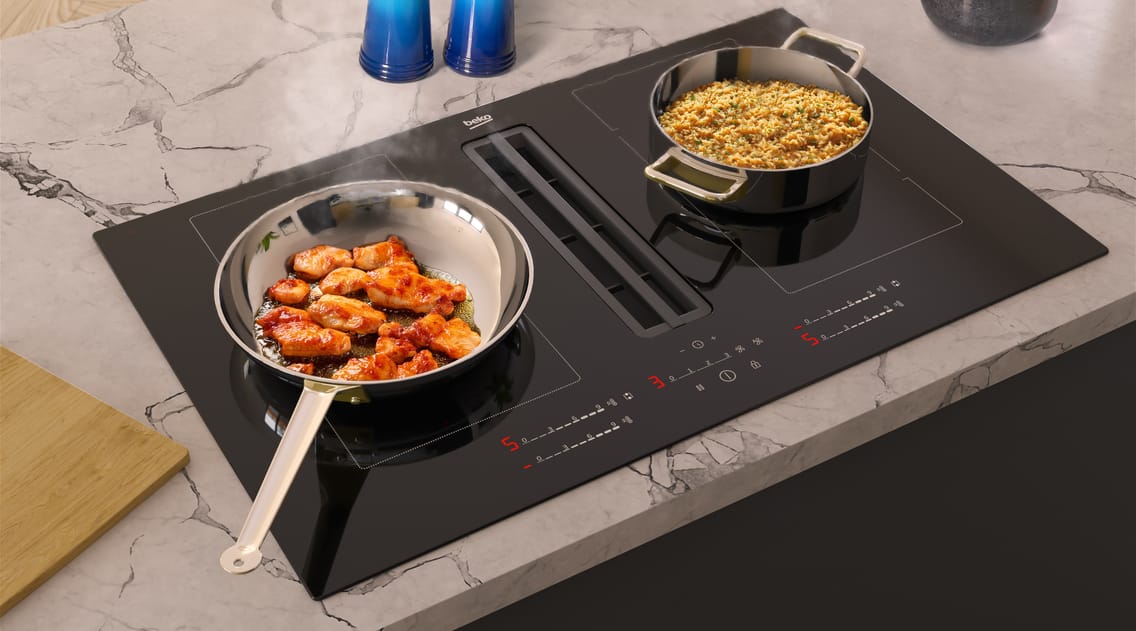Hobs: Gas vs Electric
When it comes to fitting out your kitchen with appliances that best suit your personal preference, one decision that may leave a homeowner or kitchen renovator stumped is whether to install a gas or electric hob.
Here we will give you all the information you need to help you with your decision, including the pros and cons of both.
Understanding Gas Hobs

One of the major benefits of the gas hob is undoubtedly its ability to heat up immediately after the burner is ignited. Many cooking enthusiasts find the precise temperature adjustments to be to their advantage, too. This means you can easily control the temperature from simmering and boiling for an authentic cooking experience.
Gas hobs also tend to have more options with regards to burner sizes as opposed to their electric counterpart. This makes cooking with different size pots and pans much easier to control and prevent overheating and the spoiling of foods.
Exploring Electric Hobs

Electric hobs are widely seen as the easier option with the controls and settings more straightforward, meaning it is a good alternative for cooks of all skill levels.
Electric hobs also offer highly precise heat levels. The main difference is that gas hobs provide instant heat at the desired level as soon as they're turned on, while electric hobs take a moment to reach the set temperature. However, electric hobs typically feature clearly defined heat settings, such as levels 1-9, making it easier to achieve and maintain specific heat levels compared to gas hobs. This makes electric hobs more precise overall.
The safety features which are generally found with electric hobs also tend to be better than the gas alternative. Most electric hobs will come with automatic shut-off, residual heat indicators and child locks, leaving you with peace of mind that you and your nearest and dearest are safe.
The smooth surface that’s associated with electric hobs, such as glass or ceramic, also presents its benefits by making it easier to keep clean than the grates and burners of a gas hob.
With energy efficiency becoming a key consideration for many households, electric hobs-especially induction models like the 60cm Induction Hob with Touch Controls-are increasingly favoured for their superior energy efficiency compared to gas hobs. Induction hobs work by converting energy directly into heat, significantly reducing energy waste.
Induction Hobs: The Modern Alternative

The induction hob works by using electromagnetic fields to generate heat. This works as the copper coils beneath the glass surface of the hob have an electric current that passes through when switched on, creating a fluctuating magnetic field.
Speed is one of the biggest advantages as opposed to a gas hob as the heat is transferred directly to the pot or pan itself, reducing heat loss. This not only has a positive impact on cooking times but also plays a part in improving energy efficiency whilst in use.
The safety aspect of an induction hob is also a major consideration, especially for households that have children and pets, as the surface will remain cool whilst in use, and only the cookware will be hot.
Cost Comparison
Before deciding on whether to purchase a gas or electric hob it is important to consider the price of not only the appliance itself, but the installation costs and ongoing operational charges, too.
Gas and electric hobs generally have similiar initial costs, while induction hobs tend to be more expensive due to their advanced technology.
The operating costs for gas and electric largely depend on the current cost of supply in your area, and with your chosen provider.
At Beko we have a large variety of both gas and electric hobs and we would highly recommend you opt for an induction model for its energy-efficiency.
Installation Considerations
If you decide to invest in a gas hob, it is essential to prioritise safety by hiring a GAS safe registered engineer for the installation. These certified professionals have undergone rigorous training and assessment to ensure they are qualified to work with gas appliances. Installing a gas hob involves managing gas connections, which can pose serious hazards if not done correctly. Gas leaks or improper installations can lead to significant safety risks, including fire hazards and carbon monoxide poisoning, proving the importance of getting a professional in the handle the job.
An electrician will be required for the installation of the electric hob, as it needs to be hard-wired. Induction hobs come with Easy Installation Clips-mounted clips on the side of the hob that secure it in place without the need for screws or additional fixings, ensuring a quick and effortless installation.
Efficiency and Economics
Comparing the efficiency and cost-effectiveness of your hob is another important consideration before you invest in the appliance.
Gas hobs typically lose a large amount of heat to the surrounding air, negatively impacting its efficiency score. Gas does pull it back through its immediate and adjustable heat levels, which is beneficial when cooking certain foods. It is also advised that regular maintenance from a professional should be arranged to ensure the safety and efficiency of the hob, which naturally incurs additional costs.
Electric hobs may take longer to adjust to a desired temperature, but the induction hob provides quick and precise temperature control and is seen as the most efficient of all hobs on the market. Arranging maintenance compared to gas is also significantly lower, considering a gas leak is not a danger, and so costs post-purchase are more cost-effective.
Practical Tips for Choosing the Right Hob
Your individual cooking style will influence which hob is better suited to you and your kitchen.
Gas is favoured by professionals and/or eager home-cooking enthusiasts thanks to its precise heat control, making it the ideal hob for sautéing, searing, and stir-frying where precise temperature adjustments are needed.
Everyday home cooks, often prefer electric hob for their simplicity, safety and cost-efficiency.
For those seeking the perfect blend of precision and modern convenience, induction hobs are an excellent choice. They offer fast, responsive heating, energy efficiency, and a sleek, easy-to-clean
Frequently Asked Questions Hobs: Gas vs Electric
What are the main differences between gas and electric hobs?
The main difference between gas and electric hobs is that gas uses an open flame for cooking, whilst electric use electric coils or induction technology.
Are gas hobs safer than electric hobs?
Gas hobs pose risks such as gas leaks and carbon monoxide, whereas electric hobs tend to have fewer risks, but can still cause harm if you encounter them whilst the hob is still hot. Induction hobs offer maximum safety, as the induction current automatically stops when a pan is removed, causing the heat to reduce immediately. Additionally, only the surface area in contact with the pan is heated, leaving the rest of the cooking zone cool and unused.
Which hob is better for high-heat cooking techniques?
While gas hobs are often praised for their ability to cook at precise temperatures and provide instant heat, electric hobs-particularly induction models-are equally precise, if not more so. Induction hobs offer clearly defined heat levels, such as settings from 1-9, making it easier to achieve and maintain consistent temperatures, whereas gas hobs rely on manual adjustments. Additionally, induction hobs are well-known for their rapid heating capabilities.
Which hob is easier to clean?
Electric hobs-especially induction hobs-are the easiest to clean since their smooth surfaces prevent spills from seeping into grates and burners.



